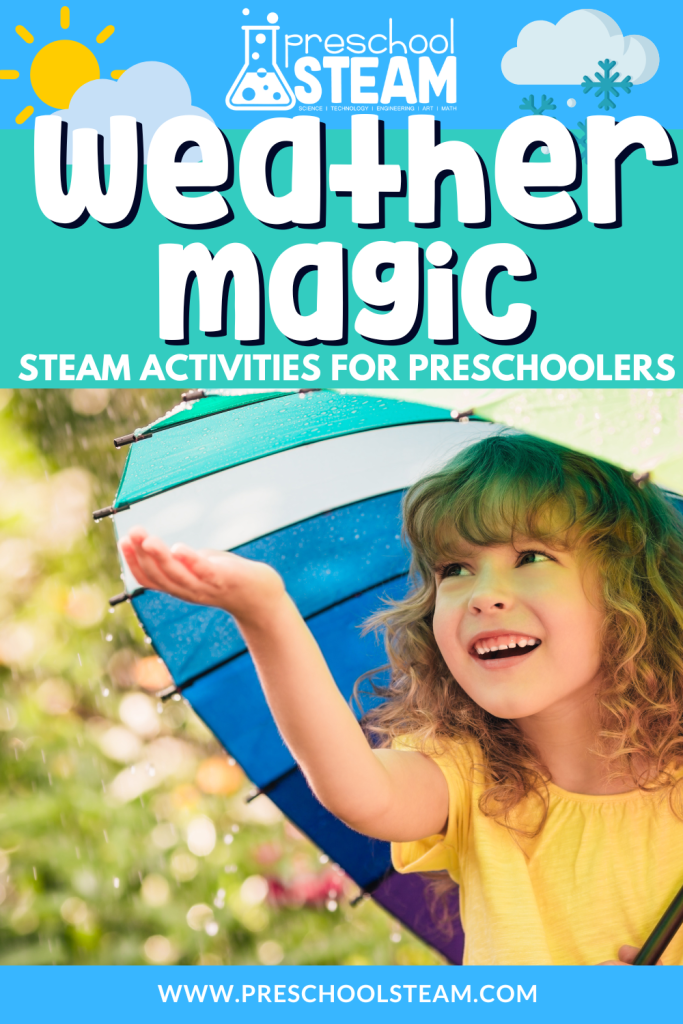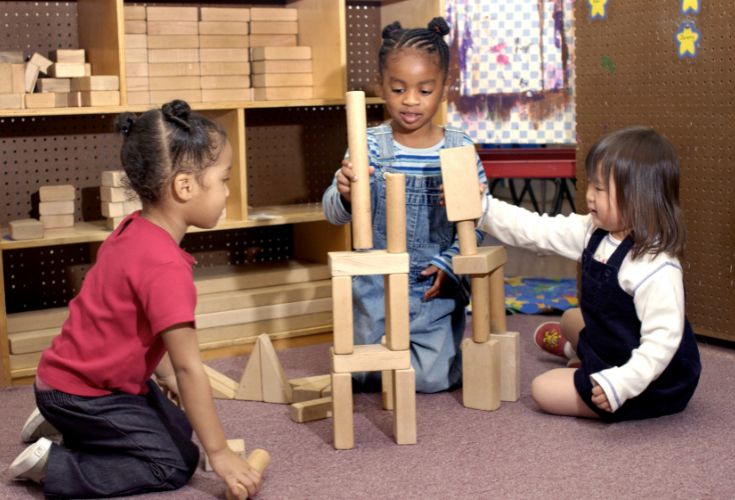Weather is one of the most fascinating and ever-changing aspects of our environment. For preschoolers, it offers endless opportunities for curiosity, discovery, and learning.
Whether it’s watching the clouds float by, feeling the warmth of the sun, or listening to the sound of raindrops, weather brings a sense of wonder to everyday life.
But how can educators and parents harness that natural curiosity and turn it into meaningful STEAM (Science, Technology, Engineering, Art, and Math) learning?

In this blog post, we’ll explore how to make weather a daily wonder in your preschool classroom, incorporating it into your routine in ways that foster observation, critical thinking, and creativity. We’ll also share tips for using weather as a bridge to hands-on STEAM activities that inspire children to think about the world around them in new ways.
Why Weather is a Perfect Daily Learning Tool for Preschoolers
1. It’s Always Relevant:
Weather is a constant in our lives, which makes it an ideal subject for daily observation and learning. Whether it’s sunny, rainy, windy, or snowy, children can experience weather firsthand every day, making it an accessible and relatable topic.
2. It Encourages Curiosity and Questioning:
Young children are naturally curious about the world around them, and weather is no exception. They may wonder why the sky changes color, how rain forms, or why it feels colder on some days. This curiosity opens the door for scientific inquiry and experimentation.
3. It Engages Multiple Senses:
Weather is a multi-sensory experience. Children can see the changing sky, feel the wind on their skin, hear the patter of raindrops, and smell the fresh scent of the air after a storm. These sensory experiences help children connect with their environment in deep, meaningful ways.
4. It’s a Gateway to STEAM Learning:
Weather naturally integrates all aspects of STEAM learning. Observing and tracking weather involves science and math, using tools like thermometers introduces technology, engineering comes into play when solving weather-related challenges, and art is a wonderful outlet for children to express their observations.
Incorporating Weather into Your Daily Routine
Making weather a daily wonder in your classroom starts with integrating it into your routine in simple, engaging ways. Here are some practical ideas:
1. Start with Daily Weather Observations
Each morning, take time to observe the weather with your students. You can step outside or simply look out the window. Encourage the children to describe what they see and feel—Is it sunny or cloudy? Is the wind blowing? Is it warm or cool? Use open-ended questions to prompt their observations, such as:
- “What do you notice about the sky today?”
- “How does the weather feel on your skin?”
- “What kinds of clouds do you see?”
These questions help children become more aware of their surroundings and begin to develop observational skills that are foundational to scientific thinking.
2. Use a Weather Chart to Track Changes
Set up a weather chart in your classroom where children can help record the weather each day. You might include symbols for sunny, cloudy, rainy, windy, or snowy days and let the children take turns adding the appropriate symbol. Over time, this activity helps children recognize patterns in the weather and introduces the concept of data collection.
You can extend this activity by asking questions like, “How many sunny days did we have this week?” or “What type of weather have we seen the most this month?” This not only reinforces math skills but also encourages pattern recognition and critical thinking.
3. Incorporate Weather Tools
Introducing simple weather tools like thermometers, wind socks, or rain gauges adds an extra layer of engagement to weather observation. Teach children how to use these tools to measure temperature, wind direction, or rainfall. These tools help them understand how meteorologists collect weather data and give them hands-on experience with early technology concepts.
4. Bring Weather into Dramatic Play
Weather can also be a fun addition to dramatic play. Set up a pretend “weather station” where children can act as meteorologists, using microphones, maps, and pretend weather tools to give daily forecasts. This role-playing activity not only reinforces what they’ve learned about weather but also builds communication and social skills.
Making Weather a STEAM Learning Opportunity
Once weather observation becomes a daily routine, you can expand on that foundation with STEAM-based activities that deepen children’s understanding of weather phenomena. Here are a few STEAM ideas to try:
1. Science: Cloud Exploration
Teach children about different types of clouds—cumulus, cirrus, and stratus—by observing the sky and identifying cloud shapes. You can pair this with a hands-on cloud-making activity where children create fluffy “clouds” using cotton balls or shaving cream, discussing how clouds form in the atmosphere.
2. Technology: Build a Wind Sock
Help children build a simple wind sock using paper, string, and markers. Once it’s assembled, place it outside and observe how it moves with the wind. Explain how wind socks are used to measure wind direction and speed. Over time, children can track how windy days affect the movement of their wind sock.
3. Engineering: Design a Weather Shelter
Challenge the children to think like engineers by designing a shelter that can withstand different types of weather, such as rain or wind. Provide building materials like blocks, cardboard, and fabric, and encourage them to test their structures by spraying water (rain) or using a fan (wind). This activity sparks creativity and critical thinking while teaching them about weather’s impact on structures.
4. Art: Create Weather-Inspired Art
Encourage children to express their weather observations through art. They can paint pictures of a stormy sky, create rain clouds out of cotton balls, or make snowflakes using paper and scissors. Art gives children an outlet to process what they see in the natural world and lets them use their imagination to bring weather to life on paper.
5. Math: Measure and Graph Rainfall
If you’ve set up a rain gauge outside, help the children measure the amount of rainfall each day and record the data. Over time, create a simple graph to show how much rain fell each week or month. This introduces children to the concept of measurement and data representation in a way that’s easy for them to understand.
Encouraging Deeper Thinking About Weather
Weather naturally sparks children’s curiosity, but as educators, we can help them take that curiosity further by encouraging deeper thinking and inquiry. Here are some ways to foster critical thinking:
- Ask Open-Ended Questions: Encourage children to think beyond surface observations by asking open-ended questions like, “What do you think causes the wind to blow?” or “Why do you think it rains?”
- Explore Weather Phenomena: Dive into specific weather phenomena, such as thunderstorms, snowstorms, or hurricanes, and explore the science behind them. You can use books, videos, or simple experiments to explain these concepts in an age-appropriate way.
- Connect Weather to Seasons: As the seasons change, discuss how weather patterns shift throughout the year. Ask children to reflect on the differences between fall and winter weather or summer and spring. This helps them understand the larger patterns and cycles of the Earth.
By making weather a daily part of your preschool classroom, you open the door to endless learning possibilities. Whether through simple observations, hands-on experiments, or creative play, weather offers a natural pathway to STEAM learning that engages children’s senses and sparks their curiosity.
As you integrate weather into your routine, you’ll see children begin to ask more questions, make predictions, and explore the world around them in new ways. And by encouraging this curiosity, you’re helping them develop the critical thinking, observation, and problem-solving skills that are the foundation of STEAM education.
For more weather-themed activities and ideas, be sure to check out our member-exclusive Preschool STEAM Play Guide, where we provide detailed lesson plans and projects that make weather a central part of your STEAM curriculum.

Leave a Reply